The Best Guitar Amp for Beginners: Affordable Noisemakers To Get Started
It Will Get Loud!
You’ve bought your first electric guitar. Perfect. Now you need an amplifier. We’ll show you the best guitar amps for beginners (in our opinion) to get you started and what to look for when buying one. Without breaking the bank.
All You Need To Know About Your First Amp
Best Guitar Amp for Beginners: What to Look For
Don’t we all remember it? That first guitar. That moment we held it in our hands? And then, inevitably, came the first amp. Cranked to 11, shaking our bedroom’s walls, and… failing to make any sonic impact once we started jamming with friends. To help you avoid this pitfall, we’ve collected a couple of suggestions for the best guitar amp for beginners.
Plus, we’ve made extra sure that these suggestions are neither too expensive as a first amp, nor are they at the very bottom of the price range. That way, you’ll get a reliable first amp that will last a long time. It used to be an endlessly discussed question whether tubes, solid-state models, or modeling amps could even be good enough in the lower price range. But these days, you’ll find excellent built-quality amps without breaking the bank for any type of amp.
Solid-state vs. Tube vs. Modeling
Three technologies dominate the market. Tube amps with “singing bulbs” in the preamp and power amp stages, solid-state models, which use transistors to shape the sound, and modeling amps. These are the newest type of amps and they most often use DSP technology to emulate amps. And since their early days, these have gone a long way.
Many professional musicians even prefer modelers these days when they’re on tour. They sound (almost) exactly like their analog counterparts without the weight and stability issues.
Combo or head plus cabinet
The choice is yours: either play a combo amp, which combines the amp and cabinet in one unit, or get a a head and an external cabinet with speakers. Option 2 gives you more flexibility when choosing individual components, but is usually a bit more expensive. It also requires you to test the different combinations to see what works best. Option 1 is often more compact, but sometimes heavier than two separate components.
Option 3 is a modeling amp—these are also available as combos and heads or, more modern, as floorboards. They look like a multi-effects device, but with amp and speaker emulation at the back. You can usually connect them directly to a PA.
Note: We decided against very cheap amplifiers, opting for slightly more expensive ones that can be used longer and are more flexible. However, we still want to stay within the budget range, so getting started doesn’t break the bank. To start, we have limited ourselves to combos because they are matched by the manufacturer, eliminating the need for experimental purchases.
The best tube guitar amps for beginners
Quick info: Tube amplifiers are said to produce a more harmonious and therefore more pleasant distortion. Depending on their design and power, they are often heavier than their counterparts and, depending on how often you play, the tubes will need to be replaced regularly by a specialist.
Harley Benton Tube15 Celestion
Although this amp has “only” 15 watts, it is probably one of the most affordable tube amps with features you usually onyl find in higher price ranges. It comes with tubes are in both the preamp and power amp, and a 12″ Celestion Seventy speaker. This thing can get seriously loud.
You also get a full EQ section, a separate gain control, and a built-in attenuator. This reduces the amp’s power from 15 to 1 watt, allowing you to get that much-loved tube saturation even at moderate volumes. Unless you play in a super-loud hard rock metal band and your drummer hits the drums with all his might (and you have a PA at gigs), the Harley Benton Tube15 Celestion* is pretty much unbeatable in this price range. It also comes with a built-in reverb.
But beware: there’s only one channel here. If you want more than one sound, you’ll need some effects pedals – for example, an overdrive or booster.

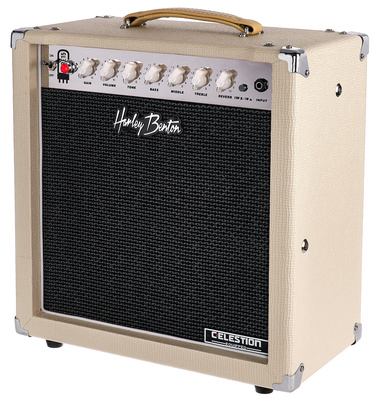
Bugera V55 Infinum
Pure watts aren’t everything, but the Bugera V55 Infinum* offers more than any other amp we know in this price range. And most importantly, it sounds great too. 55 watts, 2 channels (clean and distorted), 1×12″ speaker, 3-band EQ, gain and volume and master are separately adjustable, and there is an additional bright input for muffled electric guitars.

You can switch the channel and the built-in reverb directly from your stage position using the included foot switch. At 24.3 kilos (roughly 54 pounds), this combo is not the most mobile, carry-friendly solution. But it packs 5 tubes (three in the preamp, two in the power amp), and even a reverb effect for epic lead sounds. Besides the V55*, there is also the much smaller and quieter V5*. This model offers a switchable output from 5W to 1W to 0.1W, so even your most sensible neighbors won’t complain.

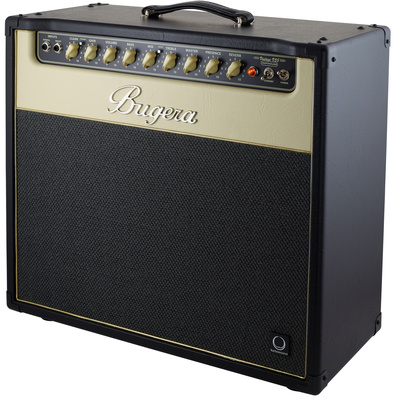

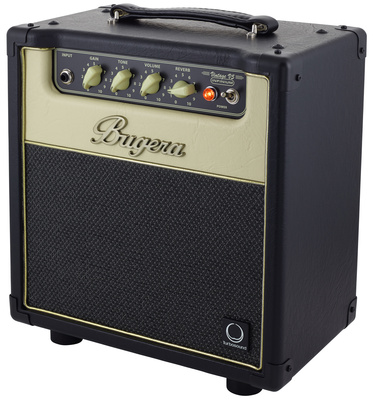
The best solid-state guitar amps for beginners
Transistors have a bit of a bad reputation. Still, quite a few amps in this category, especially in the higher price ranges, have been responsible for the great sound on countless albums and gigs for years, such as the Roland Jazz Chorus. But even for less money, you can get solid-state amps as a basis for your own sound. Above all, they are usually cheaper than tube amps and generally lighter.
Orange Crush 35 RT
The Orange Crush 35 RT* is smaller and more affordable. It doesn’t have a single tube, but this combo still sounds great. 35 watts, 1×10″ speaker, two channels (clean and dirty), and a built-in tuner are a pretty solid foundation.
It also features the characteristic controls found on more expensive Orange amps. Optionally, you can practice with headphones or plug your phone into the AUX input and play along with your favorite songs.
If you like the Orange sound or have seen it used by your favorite bands, this is a very good place to start – although you shouldn’t expect the stadium rock sound of a full stack.

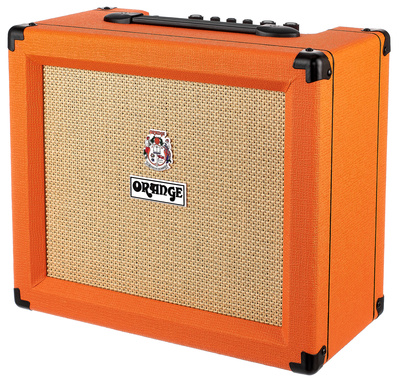
Fender Champion II 50
While it’s no Deluxe Reverb, the Fender Champion II 50 could easily be called the best guitar amp for beginners. You get the looks of their legendary amp line, two channels, 50 watts, a mini-jack aux-in, and a headphone output for practicing at home. That’s quite a solid statement at this price point.
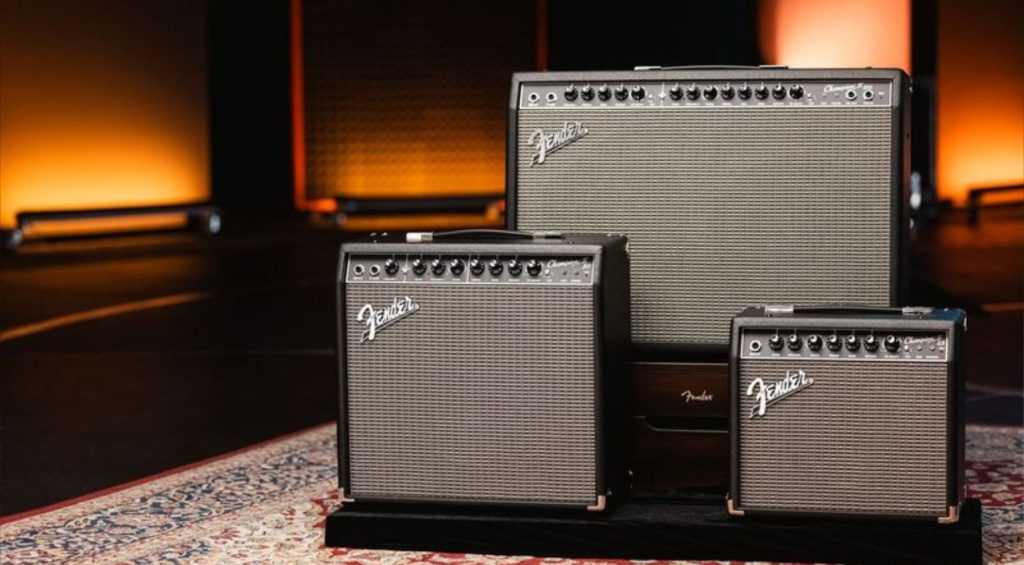
The Champion II 50 also includes a variety of vintage-flavored effects to choose from (reverb, delay/echo, chorus, tremolo, vibratone, and more) and tap tempo functionality to match the delay’ or tremolo’s tempo to the bpm of your song. It’s available at Thomann*

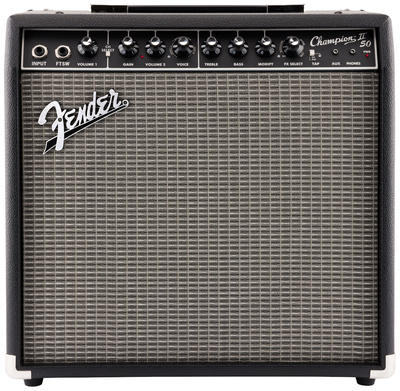
The Best Modeling Guitar Amps for Beginners
The technology has been here for a while: modeling amps from Kemper, Line6, Headrush, and others has replaced amps for many professionals, especially for touring. In a small box, you get what feels like endless sounds for little money, because instead of “component mix = sound,” the sound is created via DSP (digital signal processing). This keeps costs down and, in newer models, the sound quality is pretty high.
Boss Katana 50 MK III
Most people are probably more familiar with BOSS from their well-known and virtually indestructible effects pedals. But the Japanese manufacturer also builds amplifiers. The Katana series is kept simple, and it features an in-house modeling engine.
With the Katana 50 MK 3*, you get a mighty 50 watts and a 12″ speaker. With this model, you’ll have an amp at your side that you can play for a long time. You can choose between 12 amps and 5 effects (3 simultaneously). You can also reduce the output power from 50 to 25 and 0.5 watts for neighbor-friendly practicing.


Best Guitar Amp for Beginners: Positive Grid Spark 2
Spark 2 from Positive Grid might look small, but it can sound and scream much like the big guys. Plus, this combo includes so much modeling and AI technology, you’ll get one of the most foward-thinking amplifiers on the market. Besides 50 watts, a built-in looper, three effects, and 8 preset slots, the Spark 2 also functions as an audio interface once you connect it to your computer. Just plug in your guitar and record!

The AI part of this amp mainly comes from the accompanying app. In it, you can select from a huge variety of popular songs, sounds and guitarists – and it will automatically create a virtual pedal and amp combination for you. Next, just start playing with a sound that’s very similar to the original from the get go. Spark 2 is available from Thomann*.

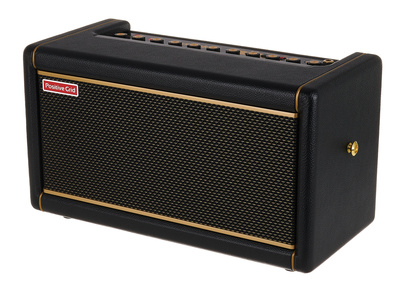
Best Guitar Amp for Beginners: What was Your First Amp?
Were we able to help you out and give you a few tips for choosing your first big amp? Which model will you go for? And what technology?
What would be your choice for best guitar amp for beginners? Let us know in the commments!
This list of the best guitar amp for beginners was first published at Gearnews.de by Claudius Grieger, translated and updated by Julian Schmauch.
*Disclaimer: This post contains affiliate links and/or widgets. When you buy a product via our affiliate partner, we receive a small commission that helps support what we do. Don’t worry, you pay the same price. Thanks for your support!
2 responses to “The Best Guitar Amp for Beginners: Affordable Noisemakers To Get Started”


 4,8 / 5,0 |
4,8 / 5,0 | 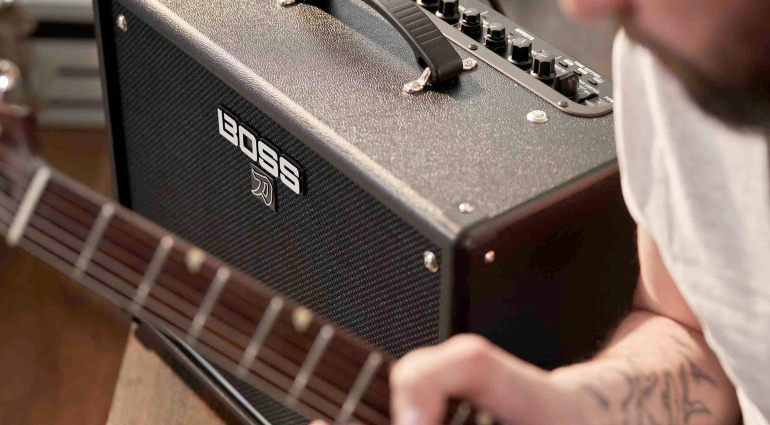




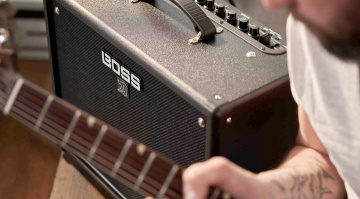


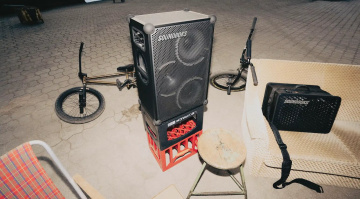



the tube 15 and katana get my vote. both have good base tones, and are loud enough for small gigs.
Katana if you want to be loud and/or use it as a pedal/preamp platform.
Spark 2 if you’re looking for a desktop amp for home.
Have both and they’re equally wonderful.